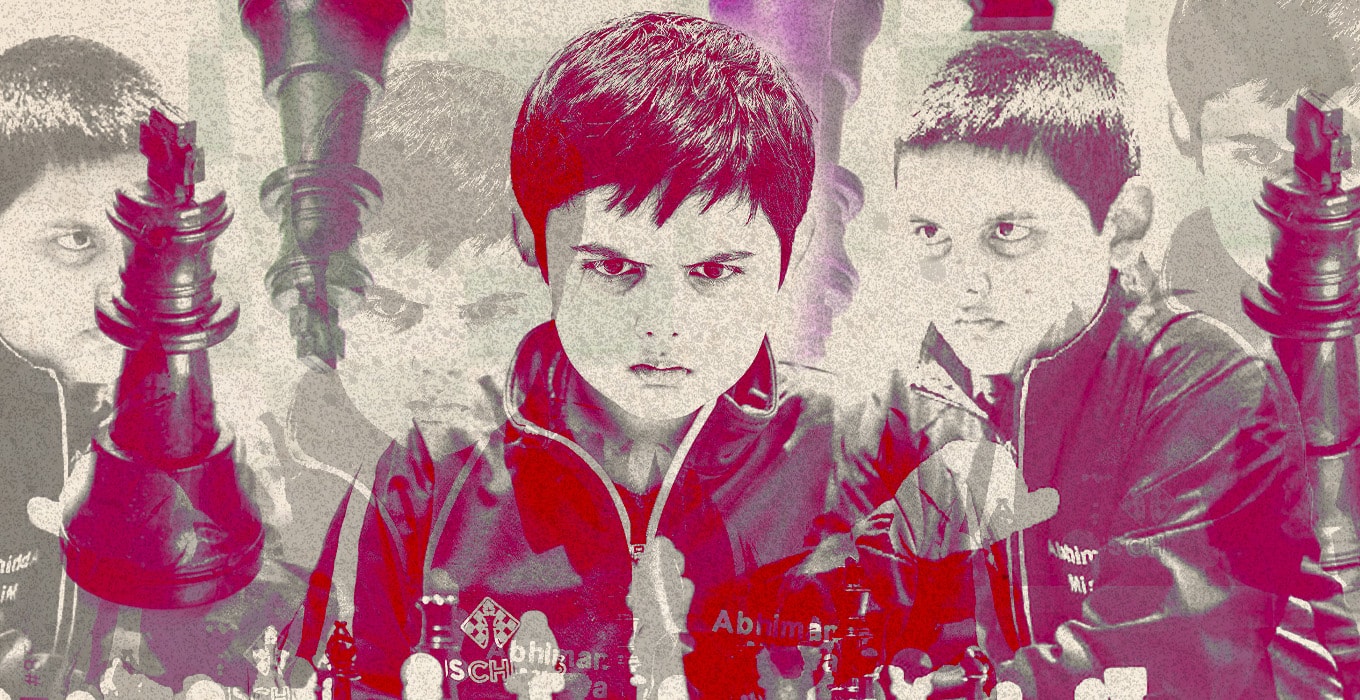Are you struggling to study and improve your chess? Check this article by Professor Barry Hymer delving into the very challenging topic of learning styles in chess…
My wish
Wouldn’t it be great if I could learn chess in a way that suited my individual learning style? If material could be presented in a form that really suited me, which meshed with and was designed to accommodate my stylistic preferences? Sure I’d need first to have a clear understanding of my preferred approach, but I already know myself well enough to know what does and doesn’t suit me when I’m studying (watching the Ginger GM’s YouTube videos of opening traps, great; working through Reuben Fine’s bone-dry treatise on endgames, not so much). Then all I need to do is find material that plays to these preferences, and ask specialist chess publishers to refine their offer accordingly. Wouldn’t that facilitate and accelerate my learning? Wouldn’t it be great? Or would it?
(Editor’s note: Barry already wrote another interesting piece on thinking in chess. Do give it a look.)
Multiple irrelevancies
Several years ago I attended a conference where the first activity took the form of an invitation to complete and score a short written questionnaire. On the basis of our answers to questions like ‘Do you enjoy taking long walks in the countryside?’ and ‘Do you notice the rhythms in everyday sounds, like traffic?’ I found myself lining up with others who were deemed to be high in ‘naturalistic intelligence’. We were then invited to consider ways in which the conference’s proceedings could best be accessed by those with our particular learning style – in my group’s case, a strong affinity with nature. It was suggested, for instance, that perhaps we’d like to discuss our responses to keynote presentations whilst taking a long walk in the conference centre’s grounds? Or apply headsets and listen to recordings of birdsong (provided) whilst reading a speaker’s paper? Other groups, supposedly high in ‘logical-mathematical’ or ‘bodily-kinaesthetic’ intelligence, were invited to interpret a verbally delivered presentation as a Venn diagram, or to turn it into an interpretative dance.
Though admittedly at the more extreme (indeed, barking mad) end of the continuum, and a dismal use of public money, my experience at this conference wasn’t all that unusual for the time. It was the heyday of the ‘learning styles revolution’ in education, and the related concept of ‘brain-based learning’ (note to self: what learning isn’t brain-based?). Educators everywhere were being encouraged to consider how best their teaching might ‘mesh’ with the individual learning styles of their students, and to design their lessons accordingly. But it was at this conference, in between the invasive piped birdsong, that I was forced to ask myself a number of troubling questions:
- What exactly is the evidence-base for these practices?
- If there is a decent evidence-base, just why are there so many competing learning styles approaches, with quite distinct theoretical and practical formulations? (Frank Coffield et al cited over 70 in their 2004 study, whilst conceding that this was probably not an exhaustive or fully comprehensive list.) Can they all be sound, or are some sounder than others?
- Why are these practices seemingly so extraordinarily popular?
(Interested in the art of resilience? Read about how to bounce back after a defeat in chess.)
Beware the neuromyths
I began exploring answers to these questions, and discovered that the evidence-base was thin, when it was present at all. For one thing, despite the plethora of learning styles approaches in existence and the panoply of instruments for assessing an individual’s preferred style, there were vanishingly few studies of any scientific rigour that had even attempted to discover if the core argument for learning styles approaches held up: ie that matching instructional content with a learner’s supposed learning style led to improved performance outcomes. And when such studies had been attempted, no solid link could be found. Pashler et al, for instance, in an extensive and criterion-referenced survey of the published evidence, concluded that “At present, there is no adequate evidence base to justify incorporating learning-styles assessments into general educational practice.” This despite the spurious pseudo-scientific patina often applied to such approaches – eg the invocation of regions of the brain, and alleged links between preferred styles and ‘neurological strengths’.
Nothing I have read in the educational literature this century, and to the present day, has required me to check my skepticism (eg Willingham et al, 2015; Aslaksen et al, 2018). This is not because all learning styles approaches are cynical attempts to cash in on well-meaning but ill-advised educators or learners. Some of the more thoughtful approaches have been developed by serious and highly-regarded academics like Howard Gardner of Harvard – whose theory of multiple intelligences (MI) was the basis for the nonsense inflicted on delegates at the conference I recalled above. It’s significant that Gardner himself has been at pains to distance his theory from the learning styles movement and industry, perhaps mindful both of the scientific vacuum at its heart and also of the abominations often perpetrated in the name of ‘MI’.
Another Interesting Read:
Impatient to Improve? That Could Be The Problem
So why are ‘learning styles’ still so popular?
Despite its shallow foundations, ‘learning styles’ have nonetheless become embedded in the fabric of educators’ core beliefs. 93 per cent of UK teachers surveyed in 2012 believed that ‘Individuals learn better when they receive information in their preferred learning style’ (Dekker et al., 2012, p. 4). The very idea of learning styles remains attractive to many people, despite its thin evidence-base. Perhaps we’re attracted to the idea that we have a unique constellation of attributes, which mark us out as different from others – special even. Pashler et al note that the idea of finding out “what type” of learner (or chessplayer?) one is has some eternal and deep appeal. Self-report questionnaires with seductive face-validity are readily completed, if they promise to reveal something ‘meaningful’ about ourselves – as every editor of a lifestyle magazine knows.
The overlap with the notion of ‘playing style’ and positional preferences in chess is clear. In an interview for our book on chess improvement, GM Luke McShane revealed that as a young player he asked his then coach, GM Danny King, what “style” Danny thought Luke had. As Luke recalls, Danny had the good sense to reply, “You don’t. You’re too young to have one”. But isn’t it attractive to think that learning could be easy if only instructional material were tailored to one’s own style? For one thing, it would help project any failings onto others – a coach, their methods, the instructional resources. Josh Waitzkin comes very close to doing just this in his autobiographical and excoriating account of his personal engagement with the great coach, Mark Dvoretsky. But maybe sometimes we all tend to do this, in our own ways?
One of my PhD students, Jon Tibke, wrote a book based on his research into the pervasive neuromyths in education, and whilst acknowledging the fact that a huge volume of research confirms that every brain is unique (indeed, possibly not even two neurons within a single brain are alike!), and that “It does seem sensible … to recognize that individuals receive information and instructions in different ways …. It is another matter entirely … to attempt to pre-empt these differing responses. Rather, it would seem prudent to be ever conscious of the fact that these differences can be one of the sources of confusion and error and that a variety of approaches is significant in the accessing of new learning. … Cognitive scientist Daniel Willingham’s comment that ‘children are more alike than different in terms of how they think and learn’ should be used to balance the debate rather than close it.” (Tibke, 2019, p74)
Take-homes for chessplayers
Jon Tibke’s wise counsel should speak to us as chessplayers and chess improvers too. Yes of course we’re all different, with a unique constellation of neural connections based on both genes and experience. But we don’t differ all that much in how we learn. There is no shortcut, and evolution has bestowed all of us with the same tools for making progress. We try to avoid the less attractive routes at our own cost. Yes by all means apply agency to your Chessable MoveTrainer settings and use these flexibly, thoughtfully and in a way that works for you. But remember always that learning preferences lie at the margins of progress. The real gains are hard won and universal, and less about style, than substance.
*****
As ever, I’d welcome feedback in the form of thoughts, questions, challenges, personal reflections etc, as well as theme-suggestions for future science posts. Email me directly via [email protected]
References
Aslaksen, K., and Lorås, H. (2018). The modality-specific learning style hypothesis: a mini-review. Frontiers in Psychology (9): 1538
Baker, L. (2020); Releasing teachers from the cognitive straitjacket of visual-auditory-kinaesthetic learning styles. Impact – The journal of the Chartered College of Teaching
Coffield, F., Moseley, D., Hall, E., Ecclestone, K. (2004). Learning styles and pedagogy in post-16 learning. A systematic and critical review. London: Learning and Skills Research Centre
Dekker S, Lee N, Howard-Jones P et al. (2012) Neuromyths in education: Prevalence and predictors of misconceptions among teachers. Frontiers in Psychology 3(429): 1–8
Gardner, H. (1993); Frames of Mind. London: Fontana Press
Pashler, H, McDaniel, M., Rohrer, D, & Bjork, R.A. (2008); Learning styles: concepts and evidence. Psychological Science in the Public Interest 9 (3): 105–119
Tibke, J. (2019); Why the Brain Matters. London: Sage
Waitzkin, J. (2007); The Art of Learning: A Journey in the Pursuit of Excellence. New York: Free Press
Willingham, D.T., Hughes, E.M., & Dobolyi, D.G. (2015); The scientific status of learning styles theories. Teaching of Psychology 42 (3): 266–271







